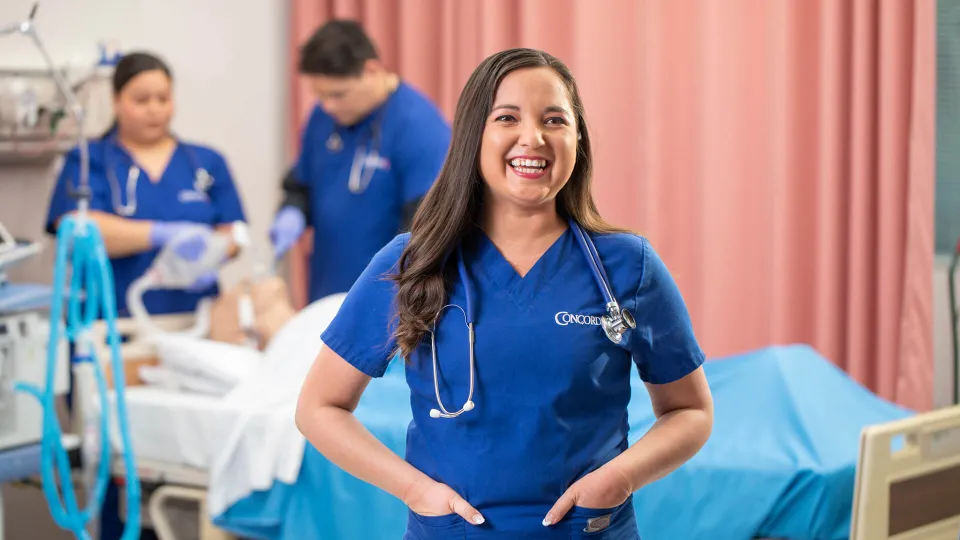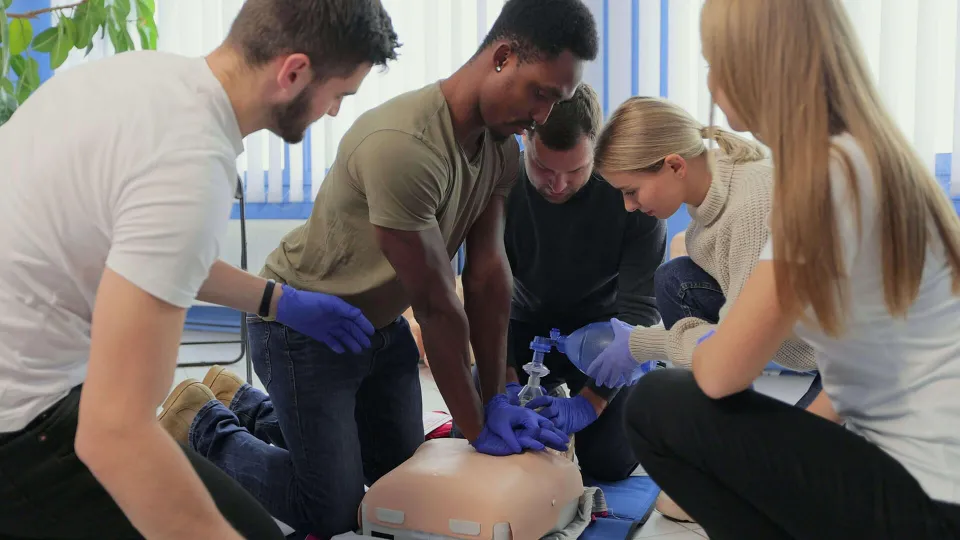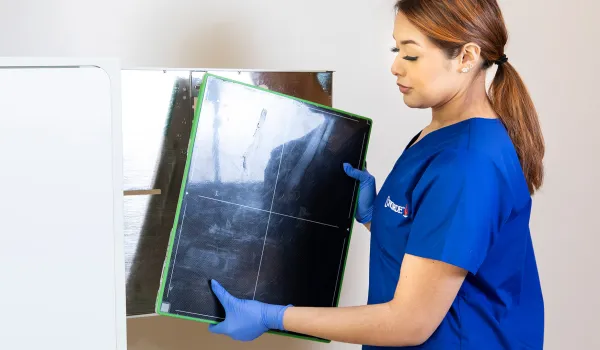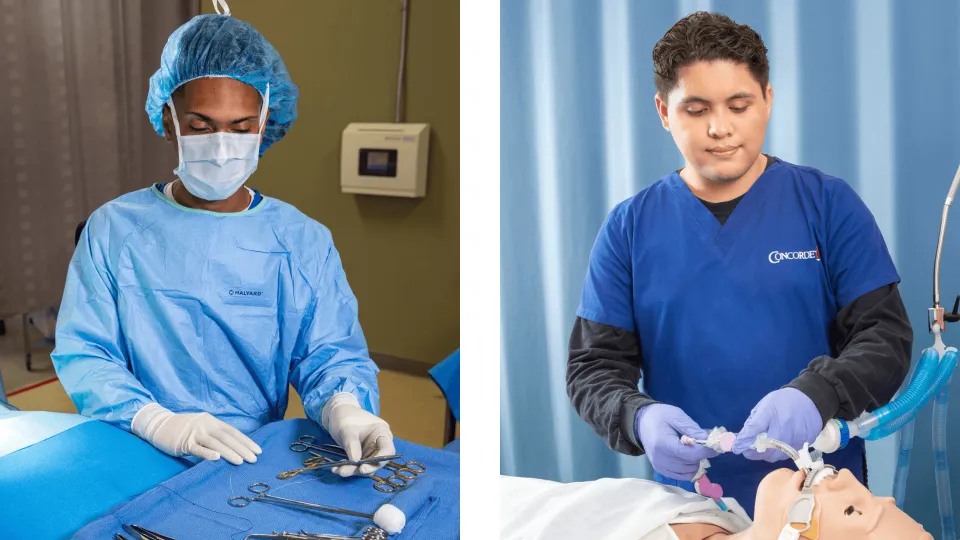
For those interested in a health care career with strong growth potential and an essential role in patient care, it's worth exploring their options as a surgical tech vs. respiratory therapist. Comparing surgical technologist and respiratory therapist roles reveals key differences. While both careers provide the opportunity to make a difference in patient care, they have distinct training paths, tasks, and responsibilities. We'll discuss the unique job description, educational requirements, and career outlooks for both options.
Job Descriptions and Primary Responsibilities

While both roles work in health care settings, the day-to-day responsibilities of surgical techs and respiratory therapists and their areas of focus are very different. Understanding these two distinct options can help prospective health care professionals determine which set of responsibilities best suits their interests, capabilities, and comfort level.
Surgical Technologist Responsibilities
Here are some of the responsibilities of surgical technologists or operating room technicians:
- Review the supplies and the surgeon's preferences prior to surgery.
- Sterilize and arrange surgical equipment and supplies.
- Prepare a sterile back table and Mayo stand with equipment, solutions, medications, supplies, and instruments needed for the procedure.
- Maintain a sterile environment.
- Help the team members with gowning and gloving.
- Assist with positioning and draping patients.
- Pass instruments and supplies to surgeons.
- Hold retractors and organs in place during surgical procedures.
- Handle specimens taken for laboratory analysis.
- Sponge or suction the operative site.
- Coordinate the camera during endoscopic surgery.
- Secure tubes, cords, and other accessories during the procedure.
- Count sponges, instruments, and sharps prior to the operation and before the incision is closed.
- Clean and prepare instruments for sterilization.
- Apply dressing on the incision site.
- Help transport the patient to the recovery room.
- Assist other team members with terminal cleaning of the operating room.
- Restock necessary supplies.
Respiratory Therapist Responsibilities
Respiratory therapists work with patients who have difficulty breathing. Like surgical technologists, they work closely with physicians, nurses, and other health care professionals. Respiratory therapists do the following:
- Examine patients with breathing difficulties or cardiopulmonary disorders.
- Perform diagnostic tests.
- Analyze blood and sputum in a laboratory.
- Consult with physicians to develop treatment plans.
- Care for patients with asthma, chronic obstructive pulmonary disease, and other respiratory problems.
- Administer respiratory treatments.
- Help manage mechanically ventilated patients.
- Monitor and record the patient's progress.
- Educate patients on how to take medications and the proper use of equipment.
Education and Training Requirements
Surgical technologists and respiratory therapists require specialized training. Surgical technologists typically need a certificate or associate's degree in surgical technology. This foundational education covers topics such as anatomy, physiology, and microbiology. Surgical technology training programs also provide instruction in functional aspects of the job, such as how to sterilize instruments, set up robotic equipment, drape patients, and maintain a sterile field. Hands-on clinical experience provides real-world practice, bringing these concepts to life.
Students can complete the Surgical Technology Associate Degree program at Concorde Career College in as little as 17 months.
Respiratory therapists usually need an associate's degree in respiratory therapy, but some employers prefer to hire candidates with a bachelor's degree. An accredited respiratory therapy program typically covers physiology, anatomy, therapeutic procedures, and diagnostic tests. Students should learn when and how to implement common respiratory treatments, such as chest physiotherapy and oxygen therapy. Off-site clinical hours provide essential hands-on experiences in a supervised setting.
Concorde's Respiratory Therapy Associate Degree program can provide the appropriate education in as few as 17 months.
Both professions require licensure in most states, and employers may prefer or require certification.
Work Environment and Settings
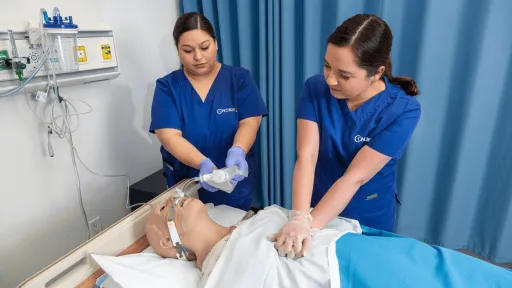
Surgical technologists and respiratory therapists both work in health care settings, but they have vastly different environments and varying levels of direct patient interaction.
Surgical technologists are primarily found in hospital operating rooms. As of 2024, 71% of surgical technologists were in hospitals, 10% worked in physicians' offices, and another 11% were employed in outpatient care centers, including ambulatory surgical centers. They have a front-row seat to a variety of surgical procedures. Though they're close to the patient physically, the patient is most often under general anesthesia. Most of a surgical technologist's interactions are with the surgeon, surgical assistant, and other health care professionals in the operating room.
Since emergency surgeries can happen at any time, surgical technologists' work schedules may include nights, weekends, and holidays. They may work longer than eight-hour shifts and stand for long periods, depending on the procedure. They may also need to lift heavy trays of medical supplies or assist in moving patients.
According to the Bureau of Labor Statistics, 82% of respiratory therapists work in hospitals. They can be found in many areas of the hospital, including the emergency room, neonatal intensive care unit, and critical care unit. These health care specialists can work with a wide range of patients, from premature infants to senior citizens. Those employed outside of hospitals typically work in nursing care facilities. Some provide in-home services to homebound patients. Respiratory therapists may work nights, weekends, or holidays, but their hours are more predictable and stable than those of surgical technologists.
Both professions may be exposed to infectious diseases in the course of their work. They should take proper precautions to minimize their risk of injury or illness.
Career Outlook and Growth Potential
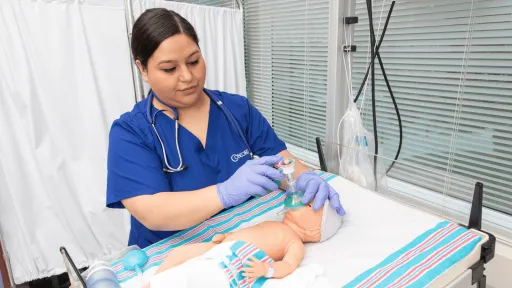
The job outlook is favorable for surgical technologists and respiratory therapists. Job opportunities for surgical technologists are projected to increase by 4% from 2024 to 2034. The job outlook for respiratory therapists is even better, with projected growth of 12% between 2024 and 2034. Both roles are ahead of the national average of 3% projected growth for all U.S. jobs over this period.
Respiratory therapists and surgical technologists may see an increase in job opportunities as a result of the aging generation. As the older adult population increases, so too will the need for health care services. Surgical technologists may see an increase in job opportunities in ambulatory surgery centers. As medical technology advances, specialists are performing a growing number of procedures on an outpatient basis. Respiratory therapists may begin to see more job opportunities in health clinics and physicians' offices as care shifts outside the hospital setting to focus more on outpatient solutions and reducing hospital readmissions.
Continuing education is important in both careers. Health care professionals must strive to stay abreast of new technologies and techniques in their fields.
Career Advancement for Respiratory Therapists
Respiratory therapists who excel at their jobs can climb the career ladder to work as shift supervisors or department managers. Some respiratory therapists even branch out into entrepreneurship and self-employment, providing respiratory diagnostic and care services independently. Those who are intrigued by emerging technologies and clinical advancements in respiratory therapy can also find employment with product and equipment manufacturers, researchers, or marketing agencies.
Career Advancement for Surgical Technologists
Surgical technologists can advance their careers as surgical assistants with hands-on training. Surgical assistants, also called first assistants, perform duties similar to surgical technologists with added responsibilities, such as making incisions, using clamps, and closing surgical sites. Specializing in a particular field, such as neurosurgery, orthopedics, or cardiothoracic surgery, can open up focused job opportunities in that area.
Skills and Qualities Needed for Success
The essential skills and qualities of surgical technologists and respiratory therapists are similar in many ways. Since these are health care careers, it's important for these professionals to communicate effectively with patients, families, and other health care providers. Clear and effective communication is important in both written and verbal forms.
Surgical technologists and respiratory therapists must possess keen attention to detail and work well under pressure. Depending on their exact specialty area and field of work, these health care professionals may face critical decisions and work with patients in life-threatening situations. Physical stamina is required for both jobs, though surgical technologists have to stand for longer periods.
Surgical technologists should also have the specialized ability to:
- Perform delicate tasks with good manual dexterity.
- Think ahead and anticipate the surgeons' needs.
- Memorize surgical instruments.
- Understand surgical procedures and technology.
Respiratory therapists must be able to:
- Perform complex problem-solving to quickly assess patient conditions.
- Use specialized medical equipment.
- Demonstrate empathy and compassion for patients with chronic conditions.
- Master respiratory treatments and procedures.
Both career paths require a commitment to ongoing learning. While students can complete their initial educational training for these jobs in less than two years, they'll need to engage in lifelong development to stay at the cutting edge of continually evolving health care technology.
Choosing the Right Career Path
Surgical technologists and respiratory therapists are in demand in today's health care industry. Surgical technologists enjoy the hands-on experience of assisting with surgeries, which can range from routine procedures to complex traumas. Respiratory therapists enjoy a focused career path with an emphasis on respiratory disorders. They also have more face time with patients and families. Explore our associate degree programs at Concorde for these career paths and other health care fields to find the best fit for your passions and talents.
"Surgical Technology Associate Degree Program." Concorde. https://www.concorde.edu/patient-care-programs/surgical-technology
"Respiratory Therapy Associate Degree Program." Concorde. https://www.concorde.edu/patient-care-programs/respiratory-therapy
"Surgical Assistants and Technologists: Work Environment." Occupational Outlook Handbook, BLS. https://www.bls.gov/ooh/healthcare/surgical-technologists.htm#tab-3
"Respiratory Therapists: Work Environment." Occupational Outlook Handbook, BLS. https://www.bls.gov/ooh/healthcare/respiratory-therapists.htm#tab-3
"Surgical Assistants and Technologists: Job Outlook." Occupational Outlook Handbook, BLS. https://www.bls.gov/ooh/healthcare/surgical-technologists.htm#tab-6
"Respiratory Therapists: Job Outlook." Occupational Outlook Handbook, BLS. https://www.bls.gov/ooh/healthcare/respiratory-therapists.htm#tab-6
"Careers in Respiratory Therapy." Concorde. https://www.concorde.edu/blog/careers-respiratory-therapy
"Surgical Technologist Job Description." Concorde. https://www.concorde.edu/blog/surgical-technologist-job-description
Take The Next Step Towards a Brighter Future
Interested in learning more about our Respiratory Therapy program?
We have a Concorde representative ready to talk about what matters most to you. Get answers about start dates, curriculum, financial aid, scholarships and more!

